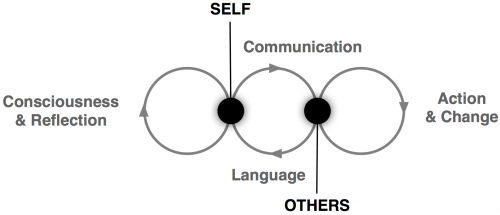Online Fundraising: please do it right
Of all things, tonight in my Institute for Nonprofit Management and Leadership class we were talking about Online Fundraising. I got a little frustrated since (a) I couldn’t get a word in and (b) they were really making a muck of it. What I was hearing was a confusion of the indicators of successful online fundraising with the methodology for creating successful online fundraising; saying things like “have a taste-maker blogger promote it” and “get people to post it on their friend’s Facebook wall”. To take a line from Joe Breiteneicher’s Quest: they were identifying with the money, not the purpose. So allow me some catharsis…
Online fundraising is no different than offline fundraising—heck, people of my generation don’t even recognize that there is a difference between on- and offline. What people want when they give is no different no matter where they give or where they are. The only difference is efficiency. Everything you can do online, you can do off-, except the reason you didn’t do it before was that it was so inefficient that no one expected you to. And now that the online sphere makes it so cheap and easy (well, if you’re doing it right), people demand it.
So what are people demanding: Community. Donors want to be linked with clients, linked with providers, linked with other organizations through you. If they don’t, it’s because they don’t realize yet that they can be—just like Britain didn’t have good food because no one demanded it because no one supplied it because no one demanded it (yes, that’s Krugman). I’m not saying that everyone will be an A-type personality—a healthy community is diverse both in participants and modes of participation—but people want the opportunity for participation.
So how do you build a successful community? What do people really want that will lead to a healthy community? I’ll just quote my notes from a conference session I attended called What Freud and Buddha Understood (and We’re Forgetting) about Online Outreach:
- Need 1: To be SEEN and HEARD
- Need 2: To be CONNECTED to someone or something
- Need 3: To be part of something GREATER THAN THEMSELVES
- Need 4: To have HOPE for the future
- Need 5: The security of TRUST
- Need 6: To be of SERVICE
- Need 7: To want HAPPINESS for self and others
When you build a campaign—whether on- or offline— that includes these components, it has the best chance of being successful. This will cause the taste-makers to stop staring at their navels and the Facebook crowd to stop poking eachother (or throwing sheep)—and start talking about you. And possibly create something else that you didn’t realize would happen in the first place… that will bring in the money.
As an ending thought, think about why churches are so successful with fundraising. They link purpose with practice with people—and do such a good job that you may not realize when you are serving the church, serving the community or when they are serving you. If a church can do that because of a shared moral calling, think about what you can do with a shared ethical and social calling. Think about it!


